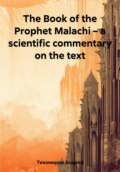
Андрей Тихомиров
The emergence of armies and armed forces
The fundamental difference between the armies of this period is the progressively increased saturation of their military equipment: automatic weapons, mortars, guns (small, medium and large calibers) in the ranks from the battalion and above, the appearance of a car in the composition, along with a horse, and occasional reinforcements of armies with tanks and aircraft. However, these armies were still foot armies, with their inherent low maneuverability. The main striking force of this period was infantry and artillery. Tanks, aircraft and motor vehicles were very poorly represented, technically they were imperfect, and therefore they could not radically change the nature of armies. These were not yet armies that met the requirements of the machine period of the war. Ego was one of the reasons why armies could not overcome positionalities in combat before the end of the First World War.
By the beginning of the Second World War, the armies were strengthened not quantitatively, but qualitatively due to their further technical equipment. These were the armies of the machine period of the war, in which the motor and the combat vehicle begin to occupy a prominent place, and the muscular strength of a man, and especially a horse, although playing a role, loses its former importance.
By the beginning of the Second World War, the Soviet armies, reflecting in their structure the advanced nature of the art of war, had become technically perfect in terms of their technical equipment, composition and striking power. Soviet military thought and practice, developmentI have quite independently, correctly resolved the question of the most operationally appropriate structural forms that meet the requirements of the machine period of the war. During the Great Patriotic War, along with the development of the Soviet military art, there was further qualitative development of the army. By the end of the war, the organization of the army reflected fully the rich operational and tactical experience of the Soviet Armed Forces and the enormous successes of the military economy of the Soviet country, which provided the army with completely modern weapons, in accordance with the latest requirements of the "war of motors". The firepower, striking power and mobility of the armies increased significantly by the end of the war.
The army in World War II had different types of composition and purpose. A combined arms army is an operational association of non—permanent personnel, which included several combined arms formations (corps or separate divisions), artillery and other special troops not included in corps (divisions), management and supply bodies. Such an army usually operated in one operational area or part of it and was part of the front (army group). Individual combined arms armies that were not part of the fronts (army groups) operated on an independent separate operational line and were directly subordinate to the Supreme High Command. Before the Second World War, new concepts appeared expressing the strategic purpose of armies – the army of invasion; the army of cover, the expeditionary army (amphibious). During the Second World War, along with combined arms armies, tank armies, airborne (air) amphibious armies, air (aviation) armies, etc. appeared for the first time.
During the Great Patriotic War, guards and shock armies were created in the Soviet Armed Forces for the first time in history.
The Great Patriotic War and the Second World War as a whole made significant changes in the understanding of the role of the army in modern operations, due to the changing nature of the operation itself. The army operation began to have a less independent character compared to the operations of the First World War; the tactical functions of the army were strengthened, the scope of its tasks was reduced.
Germany entered World War II with the strongest armed forces. The German combined arms armies deployed for the offensive on the Western European Front in 1940 consisted of 3-4 army corps, 1-2 tank corps (10-13 infantry and 1-2 tank or motorized divisions). During the offensive, the mobile corps were excluded from the army and became an independent front-line group. The army was supported in the offensive by aviation consisting of up to an air corps (500-800 combat aircraft) and provided with an anti-aircraft division to fight the air enemy. The typical composition of the German armies in 1941 before the invasion of the USSR was 3-5 army corps (10-16 infantry divisions). In addition, the armies included: 5-8 artillery regiments with heavy caliber guns, 2-4 motorized engineer regiments, a significant number of bridge and pontoon columns (parks), engineering and road construction battalions and other auxiliary units. The offensive of the armies was supported by aviation as part of the pre-aviation corps (The Great Soviet Encyclopedia, Moscow, the State Scientific Publishing House "The Great Soviet Encyclopedia", 2nd edition, editor-in-chief S.I. Vavilov, volume 3, 1950, p. 45).
The Soviet Armed Sips managed not only to stop the pressure of the German fascist armies, but also to defeat them. On the Soviet-German front, the composition of the German armies ranged from 10 to 16 infantry divisions and from 2 to 8 tank and motorized divisions. Sometimes German armies on defensive fronts reached 24-30 infantry divisions. By the end of World War II, the U.S. Army had 2-3 army corps (7-9 infantry, 1-2 tank and 1 airborne division). In the main direction, the US army was brought up to the composition of 4 army corps (up to 12 infantry and 6 tank divisions). In typical U.S. armies, mobile divisions (tank and airborne) ranged from 1/4 to 1/3 of the number of divisions. In addition, the army included a tank group (about 230 tanks), intended to strengthen the corps. In addition to regular corps artillery, the American army had army artillery: two artillery brigades with heavy-caliber guns, one anti-aircraft artillery brigade and several 76-mm self-propelled artillery fighter and anti-tank divisions. The Japanese armies consisted directly of divisions. The typical Japanese army consisted of 4-5 infantry divisions, 1-2 infantry brigades. Some Japanese armies included one tank division or brigade each.
The development of modern operations in depth and the growth of aviation led to the creation of the airborne army as the highest operational association of airborne troops intended for landing and conducting independent combat operations behind enemy lines; they included 3-4 parachute and landing landing formations.
The development of aviation, the growth of aviation units and formations, in turn, required the creation of air (aviation) armies as the highest operational or strategic associations consisting of aviation formations and having a non-permanent composition; such armies were intended to solve tasks of an operational and strategic scale and received their full organizational design and quantitative development only during the war. By the end of the war, the United States had five such armies in Europe and six in the Pacific basin. The Japanese had five air armies. The air armies included several hundred combat aircraft in their combat strength. The Americans had tactical air armies designed exclusively for joint operations with ground forces on the battlefield, and strategic heavy aircraft designed mainly for strikes against the enemy's deep rear, communications and industrial centers. In Germany, instead of the air army, the name was adopted – the air fleet; there were five such fleets.







